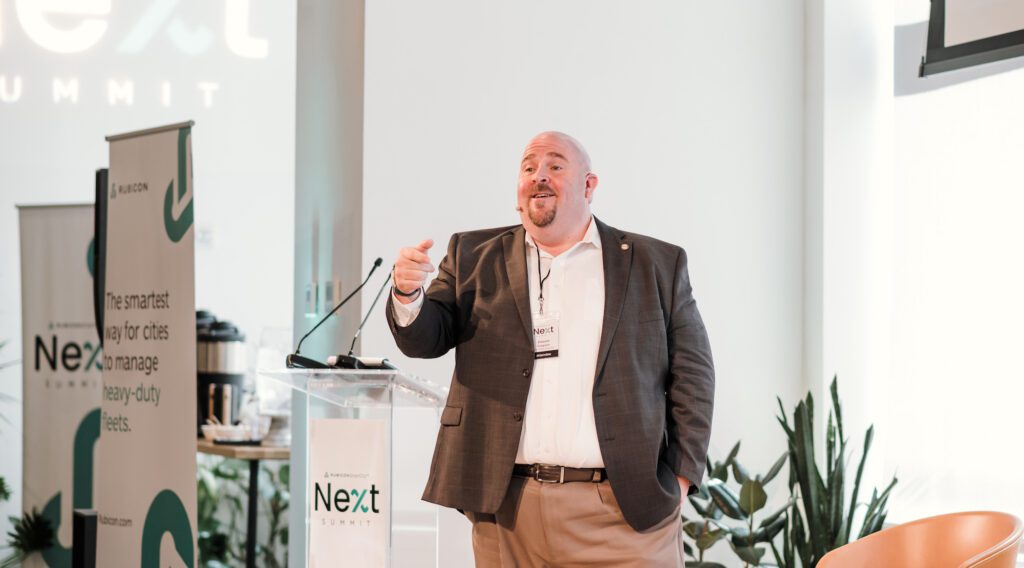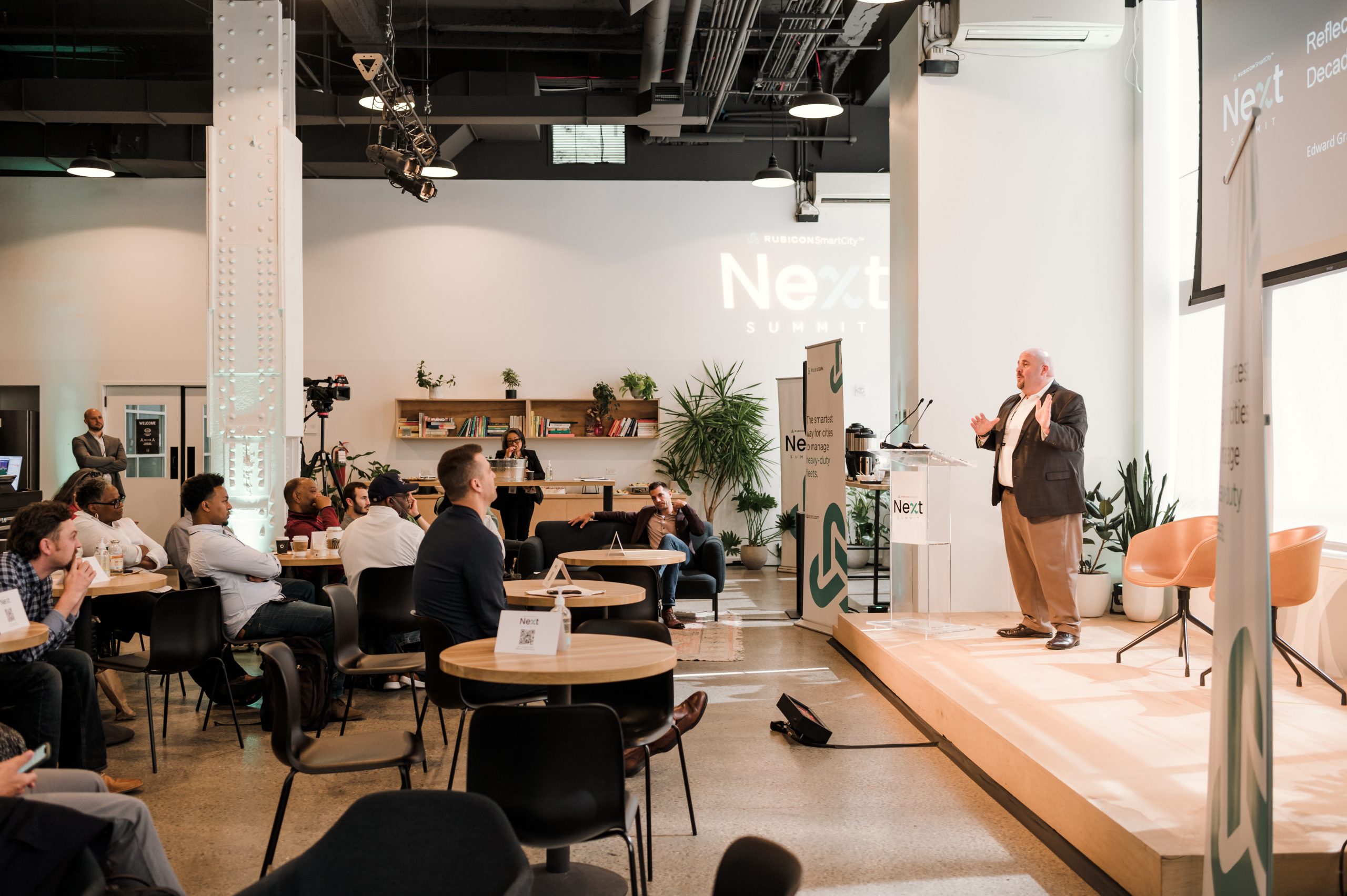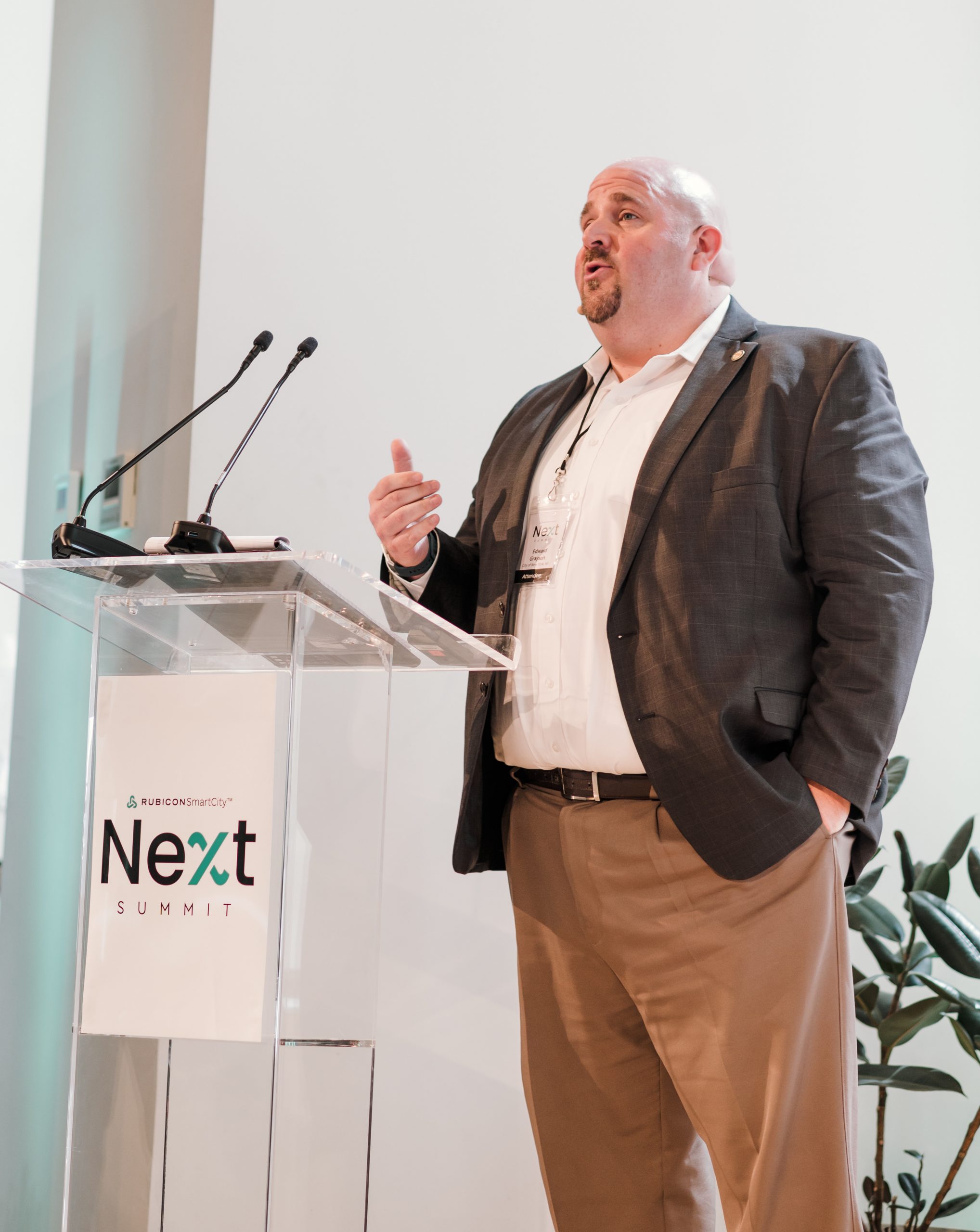Blog
Ed Grayson Reflects on Two Decades at DSNY
by SmartCity Team • January 14, 2023

NOTE: At the time this article was originally published, RUBICONSmartCity was not part of Routeware’s suite of technology solutions. RUBICONSmartCity was acquired by Routeware in August 2024 and has since been fully integrated into the company’s offering.
At RUBICONSmartCity™ Next Summit 2022, former commissioner of the Department of Sanitation of New York City (DSNY), Ed Grayson, spoke about his time with the agency and how the use of new technology has changed its operations.
Commissioner Grayson’s relationship with DSNY began long before his tenure as commissioner, before even the 20 years he spent within the department. He explained at the beginning of his keynote that his family has been at DSNY his whole life. “There has been someone with the last name of Grayson working for DSNY for the past 52 years,” he quipped. His father worked as a garbage truck driver, and his mother worked in public outreach, going door-to-door teaching people how to recycle when the recycling program began in 1989.
Because of his rich legacy with the department, Commissioner Grayson had a lot of insights to share about the fundamental truths of the waste business as well as how technology has been instrumental to its evolution.
Waste Collection is Critical to Constituent Satisfaction
Thanks to his family’s long history with the sanitation department, Commissioner Grayson has a deep understanding of the waste collection business. He explained that the DSNY collects 10,000 tons of waste every day, comprised of 8,000 tons of trash and 2,000 tons of recycling. In order to collect all of this waste, 1,200 garbage trucks roam New York City’s streets.
Commissioner Grayson listed facts and numbers to show how waste collection is considered an essential city service, and to emphasize the magnitude of the work his agency manages every day. During the pandemic, the vast majority of the DSNY’s 10,000 employees were considered frontline workers, so they continued going into work.
Waste collection is given so much manpower because the City depends on it to function. New York City doesn’t have alleyways, so all trash is placed at the curb. Thus, it can be seen and smelled by all who pass by. Denser neighborhoods have trash collections two or three times a week, which means trash sits on the street multiple days each week. When this trash isn’t picked up, New Yorkers immediately notice.

Commissioner Grayson highlighted how trash can affect citizens’ emotional wellbeing by saying, “I guarantee you that your garbage being picked up is not the start of the best day of your life, but you coming home and your garbage still being out is the cherry on top of the worst day of your life.”
Understanding the critical role this service can play in the satisfaction of residents, Commissioner Grayson explained how hard his former department works to make sure they meet customer expectations. He shared that the department had 50,000 missed collection complaints last calendar year. He explained that while this number may seem high, when you consider that 8.8 million people live in New York City and they have their trash and recycling picked up twice a week, this number is statistically quite low.
Still, he held his department to high standards, adding: “How many missed collection calls are too many? Only one.” His point reflected the significance of DSNY’s work in the functioning of the City and the satisfaction of its residents.
Data Is the Future
Having established the significant role that waste collection plays in New York City residents’ daily lives and their satisfaction with city services, Grayson shared how the department used innovative technology to improve operations, focusing particularly on the role of data.
He advocated that all municipal agencies should collect data these days, even if they do not yet see a purpose for it, saying, “You don’t even realize how many questions you can ask until you start working with big data.” He described having data to analyze and use as akin to having a “living, breathing whiteboard.” It inspires ideas for innovation.

One example of how data improved DSNY’s customer interactions was the public-facing portal PlowNYC. Before its existence, if citizens wanted to know when their street was scheduled to be plowed, citizens had to call 311 and ask for information. Now, they can access PlowNYC from their own internet-connected devices and find a color-coded map that lets them know the last time their neighborhood was plowed and when their neighborhood will be plowed again.
Although the public-facing aspect does not share the real-time location of plows for legal reasons, this data is shared with ambulances and fire trucks, so they know which streets to use during inclement weather.
Another example of DSNY’s effective use of data is the turn-by-turn directions now enabled on tablets installed in each garbage truck. This GPS navigation allows drivers to substitute for one another without knowing each other’s routes first. Also, the data collected from mapping drivers’ routes allows the department to consider more efficient ways garbage trucks may navigate the city.
He encouraged those working in city services to remain open-minded about what data can do for their operations: “Don’t look at the products as what they give you today. Think about the questions you might have in the future.”
No Matter What Changes, DSNY Will Do Waste Collection
Grayson ended his talk stressing again the importance of DSNY in the City’s past, present, and future. He explained that policy changes don’t impact the fundamental work that DSNY does. “You can rebrand it however you want, we’re going to pick it up,” he said.
For example, if the City eliminates composting or adds more items to its recyclables list, it doesn’t change the fundamental fact that DSNY will pick it up. The City will continue to need somebody to collect its waste, and DSNY will continue to show up, as exemplified by their hard work during the pandemic.
Since DSNY is an irreplaceable and essential part of city services, the agency must be able to quickly and effectively adapt to policy changes. That is where new technology comes in.
For more information on RUBICONSmartCity™, a proprietary, cloud-based technology suite that helps municipal governments run faster, smarter, and more effective waste, recycling, and heavy-duty municipal fleet operations, Get Started today with your initial quick and free consultation.